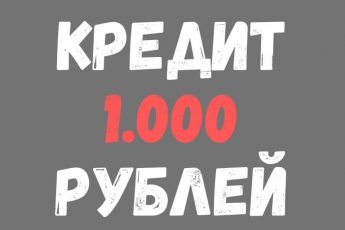What is microfinance and for whom it applies
Before a detailed study of this issue, it is necessary to study the very concept of microfinance. In any search engine, you can read the following definition:"Microfinance is a type of activity related to the provision of financial services to start-up small businesses."

The ubiquitous availability of MFIs immediately catches the eye
Often you can see how several people sit in the queue for a loan. Everywhere beautiful and bright banners with the offer of easy money, clean and nice rooms, young and friendly employees. So, why in the crisis of recent years, when many firms are not competitive and are closing, the offices of MFIs issuing cash loans are becoming more and more?
Popularity of MFIs
All the popularity of this type of activity in relatively small requirements for approval of the application for both the needs of individuals and for representatives of small businesses. And specifically for individual entrepreneurs (hereinafter referredto as individual entrepreneurs), who are the most prominent representatives of the small business sphere.
Individual entrepreneurs at the initial stages of development need additional financial resources: to expand the product range, rent a trading place. With the successful satisfaction of consumer demand and obtaining a sustainable profit, an individual entrepreneur can think about expanding the scope of his activities.
Here we can include the introduction of new commercial equipment, advertising campaignand the opening of new points of sale. Very often, the activities of individual entrepreneurs are associated with the provision of various household services to the population: hairdressers, repair and maintenance services, passenger and freight transportation.
The main risks of business: advantages and disadvantages of microloans for individual entrepreneurs
The significant advantages of microloans we can include:
- The opportunity to receive money in the shortest possible time and without providing a huge package of verification documents;
- More loyal conditions than in banks. At any time, the entrepreneur can curtail all his activities. And not all large banks are ready to cooperate because of the fear of non-repayment of the loan.
Documents for obtaining a loan in an MFI
The main documents requested by the MFI from the individual entrepreneur include the documents of his registration as a taxpayer and a person conducting activities for profit. These include: TIN, OGRN, extract from the Unified State Register of Legal Entities, code assigned okvED, tax return on taxes and fees paid. And, of course, the passport of a citizen of the Russian Federation.
Collateral as a guaranteed approval of the loan for the individual entrepreneur
Microloans secured have the highest probability of approval. They are ideal in cases where a large amount (from 1 million rubles) is needed for business development.
- Residential and commercial real estate or special equipment (excavators, tractors, etc.);
- Rights to own land or securities.
These advantages contribute to the approval of the application in a crisis situation in the region. When you need money for an entrepreneur with any credit history and with a high limit of money at acceptable interest. Any property will be a guarantee of repayment of a microloin. And so, the percentage of approval of the application will be high.
Disadvantages of microloans for individual entrepreneurs
But all these advantages can not hide one main drawback of MFIs – this is the interest rate. Regular interest rate of 2% per day! It's on one calendar day. And nothing else. If everything is calculated within a calendar year, it turns out to be at 800% per annum. Just a huge amount of debt.

Non-return of the amounts specified in the microloans agreement dooms the individual entrepreneur to an unstable future. This can be expressed in the requirements of collection services and litigation. Loss of apartments, plots of land, cars and all your collateral. It's not a myth. And for a long time objective reality and retribution for ineployance of business activities. Inability to soberly assess all the risks of borrowed capital.











